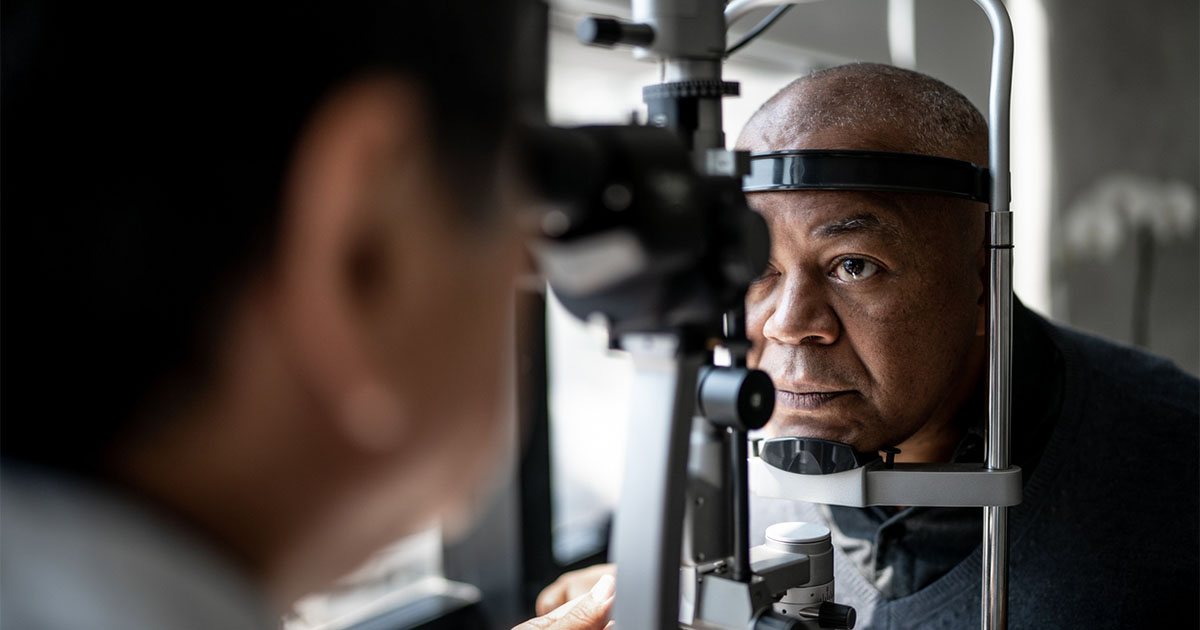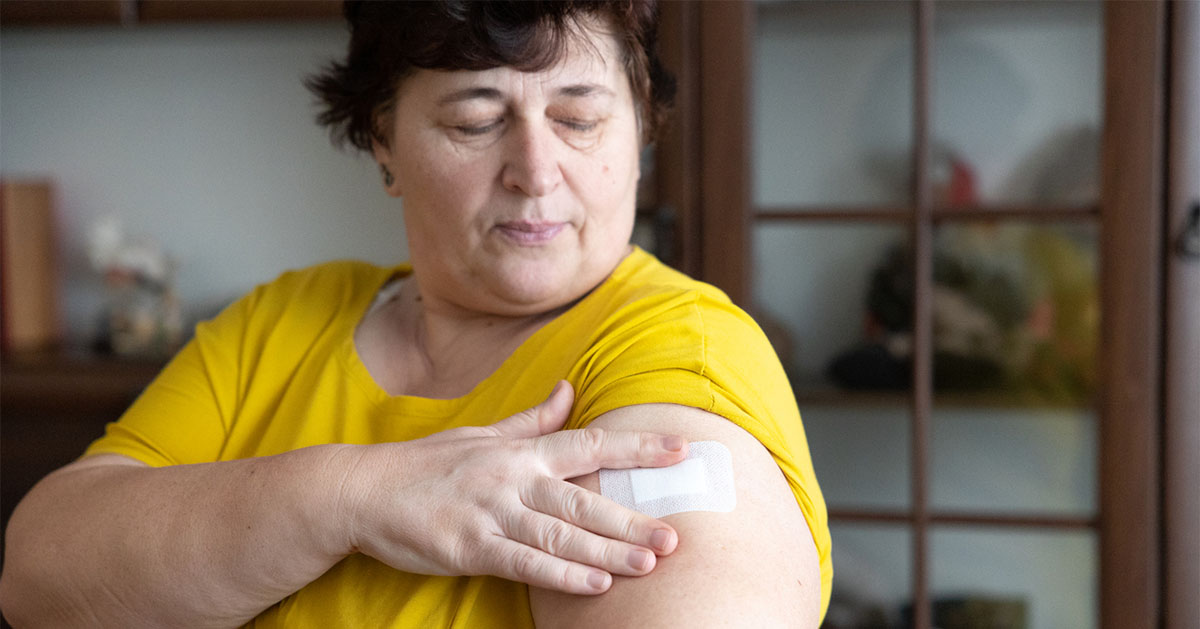For people with diabetes using injectable therapies, such as insulin and glucagon-like peptide-1 (GLP‑1) receptor agonists, poor injection technique can lead to poor absorption of injected agents. This in turn may cause immediate problems, such as hypoglycaemia, or delayed absorption, which can result in periods of hyperglycaemia (Strauss et al, 2002).
Additionally, over time, areas of lipohypertrophy (accumulation of fatty, rubbery tissue in the subcutaneous layer of the skin) and lipoatrophy (wasting of subcutaneous fat) can develop. Injection into areas of lipohypertrophy or lipoatrophy can result in variable absorption, bruising, bleeding and erratic glycaemic control (Vardar and Kizilci, 2007).
Correct subcutaneous injection technique may be defined as one that reliably delivers medication into the subcutaneous space without leakage and with minimal discomfort. To achieve this, the correct technique is crucial, yet results from two international surveys reveal that often the injection technique is flawed (Strauss et al, 2002; Frid et al, 2010a). Frid et al (2010a) examined the injecting habits of 4300 people with diabetes using insulin, 999 of whom were from the UK. Strauss et al (2002) surveyed insulin injection technique in 1002 people with either type 1 or type 2 diabetes across seven European countries. A total of 171 centres from 16 countries participated in the studies, which looked at injection technique, injection site rotation habits, incidence of lipohypertrophy, needle length, timing of injections and use of lifted skin fold.
The results of the two studies revealed that although technologies and therapies have advanced considerably over the past 10 years, the way people inject has not improved and worrying trends and practices continue (Strauss et al, 2002; Frid et al, 2010a).
UK data from the 2009 ITQ survey (Frid et al, 2010a) showed that:
- 52% used needles longer than 6 mm.
- 60% had not changed their needle size since starting injectable therapy.
- 75% did not follow any site rotation routine.
- 54% reported lipohypertrophy at some time in their life.
- 28% admitted injecting into areas of lipohypertrophy.
- 45% experienced bleeding or bruising.
- 43% released the skin fold too soon.
- 17% were using an incorrect technique for lifting a skin fold.
- 41% failed to re-suspend their cloudy insulin adequately.
- Only 41% reported frequent and adequate inspection of their injection sites.
Additionally, when asked about the education and training they received regarding injection technique, many participants could not recall important topics being covered (Table 1). This does not necessarily mean that participants did not receive education on these topics, but it does imply that they have not retained this information.
There may be a number of reasons for this. It is known that when a person with diabetes is about to perform their first self-injection, a host of emotional factors are likely to be clouding their ability to remember the detail of the information. Someone newly diagnosed with type 1 diabetes, for example, may be fearful and anticipating pain, feeling unwell, or have symptomatic hyperglycaemia and be in a state of shock, while a person with type 2 diabetes may be experiencing feelings of failure or be concerned about the side-effects from insulin such as hypoglycaemia and weight gain (Larkin et al, 2008).
For these understandable reasons, healthcare professionals may try to simplify the procedure to ease the person through their initial anxiety, but we need to revisit the importance of injection technique by providing refresher sessions for insulin users. Regular reinforcement ensures that the information provided is remembered and acted upon.
Over the past decade the importance of correct injection technique has become increasingly apparent, and the body of evidence underpinning correct injection technique continues to grow. The New Injection Recommendations for Patients with Diabetes were published in September 2010 (Frid et al, 2010b). From these international guidelines the Forum for Injection Technique (FIT) – established following the 3rd International Injection Technique meeting in Athens, 2009 – has produced The First UK Injection Technique Recommendations (FIT, 2010).
What is meant by correct injection technique?
The preferred tissue for insulin and GLP‑1 receptor agonist injection is the subcutaneous layer, which is the fatty layer just below the dermis and above the muscle layer (Frid, 2006). The subcutaneous layer offers stable absorption whatever its depth, allowing better reliability of the dose and thus less glycaemic variation.
Choosing the correct site
The subcutaneous tissue is quite easy to reach from all injection sites on the body surface. Recommended sites for injection take into account that most of the time the therapeutic agent is being self-injected (except in children and disabled people); the four preferred sites are therefore the abdomen, thighs, buttocks and arms (Figure 1).
Absorption rates from these different areas will depend on the pharmacokinetics of the injected agent. The rate of absorption of GLP‑1 receptor agonists does not appear to be site-specific, nor does that of both rapid-acting and long-acting insulin analogues, whereas the rate of absorption of human insulin is affected by site. The abdomen is thus the preferred site for injection of soluble insulin as it is absorbed faster there (Frid and Linde, 1993), with the thighs and buttocks the preferred site for NPH (neutral protamine Hagedorn) insulin injection as absorption is slowest from these sites (Henriksen et al, 1991).
When premixed human insulin is being injected it is suggested that the abdomen is used in the morning and the thigh or buttock in the evening; this is sometimes referred to as “the same time, same site rule”.
An appreciation of the structure of the skin and underlying tissue (Figure 2) is essential for selecting the correct needle length and advising on injection sites. A recent study has shown that skin thickness (i.e. epidermis and dermis) is constant, averaging about 2 mm (range 1.2–3 mm) regardless of gender, age, BMI and ethnicity (Gibney et al, 2010).
Intradermal injection has been associated with unpredictable insulin absorption (FIT, 2010), and the risk of leakage and allergic reaction is higher, whereas intramuscular injection increases the risk of the injected agent being absorbed too quickly, because it is being delivered into a tissue with a richer blood supply, resulting in greater variability in glucose levels and potentially an increased risk of hypoglycaemia (FIT, 2010). This can be of particular concern if NPH insulin or a long-acting insulin analogue is accidentally injected intramuscularly, as this can result in severe hypoglycaemia, particularly if the muscle is active (Karges et al, 2005). Additionally, injection into muscle is often painful and may cause bruising.
Unlike skin, subcutaneous tissue can vary greatly in thickness from person to person, with BMI, and between men and women. Moreover, subcutaneous depth can vary from one injection site to another on the same individual, sometimes dramatically; for example, in a person with android obesity, subcutaneous depth may be as little as 2–4 mm on the legs and arms but 20–30 mm on the abdomen. It is therefore essential that healthcare professionals assess each person individually when giving advice on the correct needle length to use.
Previously there was a misconception that people with greater subcutaneous tissue depth, such as those with a high BMI, required a longer needle. However, a study has shown that agents injected into shallow or deep subcutaneous tissue are absorbed at similar rates, with no adverse effect on glycaemic control or leakage from the injection site (Kreugel et al, 2009).
When only longer needles were available, the only option for those with little subcutaneous depth was to use a lifted skin fold or an angled injection to avoid the risk of intramuscular injection. However, with the advent of shorter needles (4–6 mm) the recommendation now is to use the appropriate size needle for the individual, injecting at a 90º angle without a lifted skin fold. This is deemed best practice and less ambiguous for the vast majority of those performing insulin injection. In a small minority, such as children and very slim adults, a lifted skin fold may still be necessary, even when using the shortest available needle.
Teaching an individual how to lift a skin fold can be challenging. Recommendations suggest lifting the skin away from the underlying muscle with two fingers and a thumb; if done incorrectly it can increase the risk of intramuscular injection (FIT, 2010).
Problems with injection sites
The development of areas of lipohypertrophy is a significant problem in many people who use insulin. Currently there is no evidence regarding the development of lipohypertrophy for those injecting GLP‑1 receptor agonists.
Results of the ITQ survey (Frid et al, 2010a) suggest that areas of lipohypertrophy were present in around half of the participants; however, personal experience of checking individuals’ injection sites each time they attend clinics suggests that the incidence may be much higher. No randomised, prospective studies establishing the causative factors in lipohypertrophy have been published, although evidence suggests an association with failure to rotate injection sites, using small injection zones, repeatedly injecting into the same location and re-using needles (Vardar and Kizilci, 2007).
Apart from sometimes being unsightly, lipohypertrophic lesions potentially worsen diabetes management as the rate of absorption of insulin delivered into these areas may be delayed or erratic (Johansson et al, 2005). When possible reasons for erratic day-to-day glucose readings are being investigated, closer inspection of the usual injections sites is strongly recommended.
Detection of lipohypertrophy requires both visualisation and palpation of the injection sites as some lesions are more easily felt than seen (Seyoum and Abdulkadir, 1996). Merely asking a person if their injection sites are “OK” is not adequate, as the problem areas may have developed so gradually that the individual is not aware there is an issue.
As part of routine care, people injecting insulin should have their injection sites checked at least annually (preferably at each visit for children); if lipohypertrophy is present, sites should be monitored at each review and the condition of the areas documented. Individuals should be taught to examine their own injection sites and how to detect developing problem areas of lipohypertrophy. When lipohypertrophy is detected, the person should be advised not to inject into this site until the abnormal tissue returns to normal; in some cases this can take many months.
People with diabetes need to be counselled that switching from injecting into areas of lipohypertrophy to injecting into normal tissue often requires a reduction in the dose injected. The amount of reduction varies from one individual to another and should be guided by frequent blood glucose measurement; the reduction required can be as high as 50% (Overland et al, 2009).
Systematic site rotation can help to reduce the risk of developing lipohypertrophy; an easy-to-follow scheme taught from the start of injection therapy is recommended. One scheme with proven effectiveness involves dividing the injection sites into quadrants or halves, depending on the area, using one quadrant or half per week, rotating within that site from day to day, then moving clockwise each week to a new area (FIT, 2010; Figure 3).
Safer administration of insulin by healthcare professionals
So far this article has concentrated on people with diabetes and how they may be taught to inject insulin correctly and safely. However, following an alarming number of serious errors in the administration of insulin by clinical staff, the National Patient Safety Agency (NPSA) issued a Rapid Response Report, Safer Administration of Insulin (NPSA, 2010), for healthcare professionals, which states:
“Between August 2003 and August 2009 the National Patient Safety Agency (NPSA) received 3881 wrong dose incident reports involving insulin. These included one death and one severe harm incident due to 10-fold dosing errors from abbreviating the term ‘Unit’. Three deaths and 17 other incidents between January 2005 and July 2009 were also reported where an intravenous syringe was used to measure and administer insulin.”
The Rapid Response Report (NPSA, 2010) focuses on the following six key areas:
- Correct use of insulin syringes or pen devices.
- The term “units” to be used in all contexts when prescribing insulin; abbreviations are never to be used.
- All clinical areas to have adequate, accessible supplies of insulin syringes and subcutaneous needles.
- An insulin syringe must always be used to measure and prepare insulin for an intravenous infusion.
- A training programme to be put in place for all healthcare staff (including medical staff) expected to prescribe, prepare and administer insulin.
- Review of policies and procedures for the preparation and administration of insulin and insulin infusions in clinical areas to ensure compliance with the above.
In response to the NPSA Alert, NHS Diabetes produced guidance and support for the safe use of insulin for health professionals. This can be found at www.diabetes.nhs.uk/safe_use_of_insulin/.
NHS Diabetes has also developed an
e-learning course around the safe use of insulin, which is freely available (http://bit.ly/xHgcTq). All nurses who undertake insulin injections are encouraged to undertake the course, and some localities are proceeding towards making it a mandatory part of training.
Conclusion
Injection technique is as important as the agent being injected. However, at present it would appear that the way injection technique is taught has not improved at the same rate as the technology underpinning it. Evidence suggests that correct technique is imperative if people with diabetes are to benefit from medical advances; as much credence therefore needs to be given to injection technique as to the agent being injected.





Increased risk of new-onset heart failure in over-65s suggests caution is required before prescribing pregabalin for painful diabetic neuropathy.
14 Aug 2025